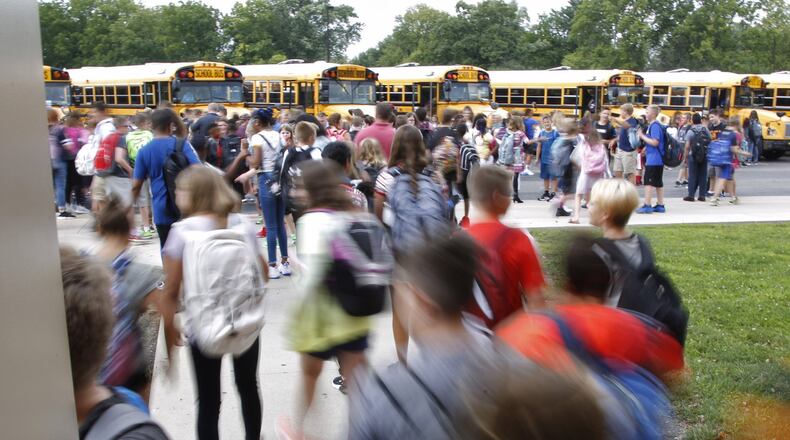RELATED: State issues own Reset & Restart guide for schools
But like a draft Ohio plan released the week before, the CDC document is heavy on advice and light on mandates. The CDC said schools should work with state and local officials, whose rules come first, to consider any unique, local circumstances.
“Implementation should be guided by what is feasible, practical, acceptable, and tailored to the needs of each community,” the CDC document says.
Since their goal is to slow the spread of COVID-19, the CDC said the lowest-risk approach is to continue virtual-only classes. But for those re-opening their buildings, the CDC said there are a number of actions school administrators can take to help lower the risk.
Face masks
The CDC recommends that K-12 students be taught how to properly wear cloth masks, and says they “should be worn by staff and students (particularly older students) as feasible.” The report calls them most essential for times when physical distancing is difficult, and acknowledges that hours-long use may not be feasible for younger students.
“Cloth face coverings are meant to protect other people in case the wearer is unknowingly infected but does not have symptoms,” the report says.
Closing key areas?
The report suggests closing “communal use” spaces such as cafeterias and any playgrounds that have shared play equipment. If not possible, the CDC calls for use at staggered times, with cleaning and disinfecting between uses.
For lunch service, the CDC says having children bring their own meals is best if it’s feasible. If not, they suggest serving “individually plated meals” in classrooms instead of in a communal cafeteria. Schools would still have to be aware of food allergy issues no matter where students ate.
SCHOOLS: Federal, state funding adjustments create winners, losers
Bellbrook schools Superintendent Doug Cozad echoed what other school leaders have said in recent weeks — that the only certainty at this point is uncertainty, and that timelines are up in the air.
“We’re trying to gather as much information as possible, and trying to put together multiple plans, knowing that what looks great today could be dramatically different in late July, for better or for worse … or it could be different in December,” he said.
Building layouts
The CDC calls for desks and other seating to be six feet apart when feasible, which would make it difficult or impossible for most classrooms to fit their normal number of students.
In areas where people normally interact face-to-face, such as reception desks, the CDC recommends physical barriers, such as sneeze guards and partitions. Similar barriers are recommended between adjacent bathroom sinks.
EDUCATION: State takeover law upheld by Supreme Court
Tape marks on floors are suggested to show distancing needs, and signage to designate one-way routes in certain hallways, to minimize face-to-face traffic.
Getting to school
The CDC recommends creating distance between children on school buses by limiting each row to one child and skipping a row when possible. This would require more bus trips, which fits with another CDC suggestion of staggering student arrival and drop-off times (or locations).
But it’s unclear how schools would adjust academic classes with students arriving and leaving at different times.
Other issues
** Shared objects: The CDC says things like art supplies, toys or other equipment that are normally touched by multiple students should be limited to one student each when possible, or cleaned well between uses at a minimum. In some cases, schools likely would not have enough of certain supplies for each student to have their own.
** Keeping groups small: Risks of spreading the virus are limited when there's less mixing of groups, the CDC said, suggesting students stay with the same staff when possible. They recommend doing virtual events instead of field trips, school assemblies, performances or parent nights.
** Basics, and stay home: Simple hygiene issues remain important — frequent handwashing, not sneezing on hands and touching your face, plus making sure sick people stay home rather than coming to school. To that end the CDC suggests canceling perfect attendance awards or other metrics that might encourage people to come to work when they really shouldn't.
About the Author

